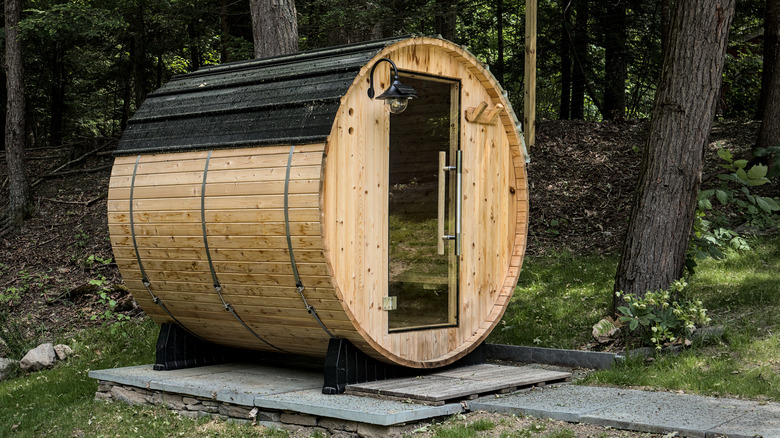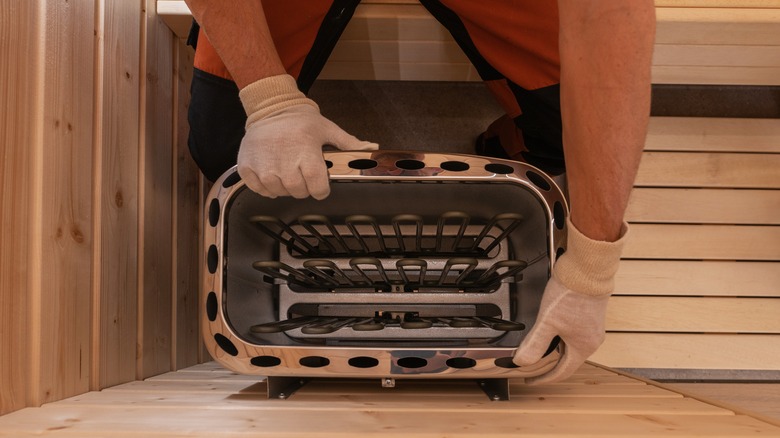How To Choose The Right Heater For Your Outdoor Sauna
We may receive a commission on purchases made from links.
You don't have to go to a fancy spa to enjoy a relaxing sauna experience. From DIY outdoor saunas to sauna kits popular with TikTokers, enjoying a sweat session from the comfort of your home whenever you like has never been easier. However, there are some potential downsides to owning an outdoor sauna, and one of the main ones to consider is energy usage. Exactly how much your sauna adds to your energy bill depends on which heater type you choose.
An outdoor saunas may be heated to the traditional temperature of 155 to 195 degrees with either a gas, electric, wood-burning, or infrared heater. Gas and infrared heaters are the cheapest, with costs as low as $10 per month depending on the size of the sauna and how often you use it. Wood-burning heaters can also be cost-efficient if you have plenty of trees around your home.
Aside from energy usage, there are other factors to consider when choosing a heater. It's important to properly size your heater to your sauna to avoid overheating or underheating, with around one kW of power for every 45 cubic feet of space. Different heaters can create a different feel, and some take longer to heat the sauna than others. Convenience and upkeep vary between the options too.
Sauna heaters compared
Electric sauna heaters — such as the Vevor 9KW Sauna Heater — are the most common option because they're affordable to install and easy to use. You can turn on the heat in your sauna as easily as you turn on the lights. They take around 20 to 45 minutes to heat up, and with adjustable thermostats, phone apps, and timers, you can also pre-heat your sauna to your ideal temperature before you get home. Maintenance is minimal. However, electric heaters can add more to your energy bill than other types; running it four times a week could cost an extra $15 a month or so on average.
Wood-burning heaters are also popular, especially in rustic areas where chopping firewood is easier than running electricity. They're more traditional and produce a strong heat that's ideal for larger saunas. The tradeoff is that they can take up to an hour to warm up, and it's more difficult to regulate the temperature than with an electric heater. Wood-burning heaters require tending the fire, cleaning out the ashes, and keeping firewood on hand, as well as careful installation to ensure safe ventilation.
The last two options, gas and infrared, are less common. Gas is cheap to operate long-term, but it's expensive to set up safely, making it more suitable for commercial saunas than home saunas. Infrared saunas are also pricey upfront, though they're rising in popularity. They don't get quite as hot as traditional saunas — 120 to 140 degrees, compared to 155 to 195 degrees — but some people may prefer that. Infrared saunas are energy-efficient and heat up in as little as 10 to 20 minutes.

